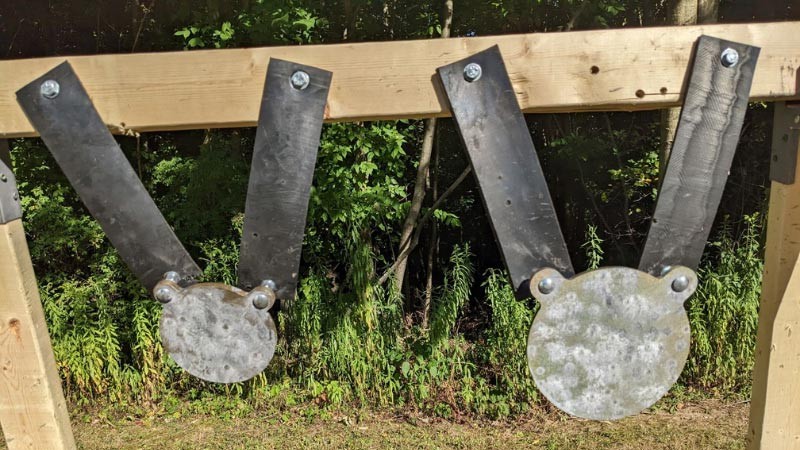🎯What Kind of Steel is Used in Targets? | Steel Target Types Used
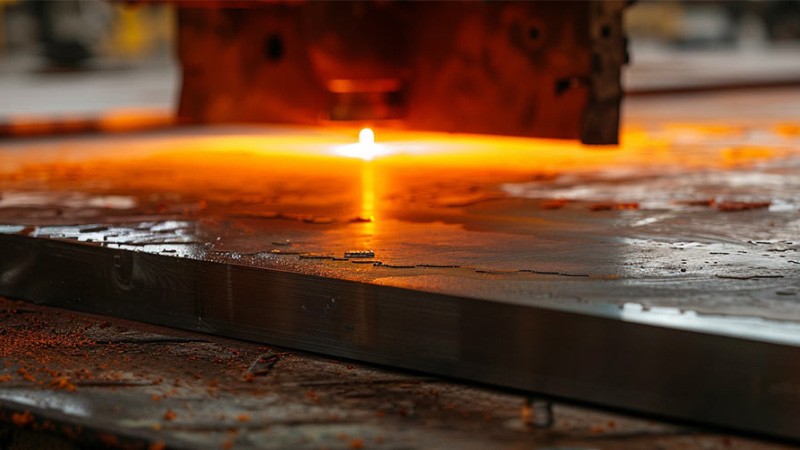
What Kind of Steel is Used in Shooting Targets?
The quest for the perfect steel target leads us down a road paved with a specialized kind of steel known for its endurance and resilience when used for steel targets for shooting. When it comes to creating durable steel targets, the dominant player is AR500 steel, a grade steel championing both durability and hardness.
This particular steel used in the realm of steel targets has earned its stripes through a quintessential strength that withstands repeated bullet strikes. It's not just any steel, but a meticulously chosen type that promises to take a punch and stay standing.
Steel target types vary of course, and within this metallic spectrum, thickness plays a pivotal role. The thicker the steel, the more punishment it can endure. However, practicality dictates a balance – too thick and you're burdened with immobility, too thin and you risk your target donning a guise more akin to Swiss cheese than a practice tool. It is also of significant importance to educate yourself on proper mounting of steel targets so you get the most benefit from them.
For most shooting targets, thickness is carefully calibrated in tandem with the caliber of projected ammunition. Metal targets, in essence, are not a one-size-fits-all solution, and the type and grade steel determine their spectrum of use.
Within the shooting community, there's a recognition of the harmonious marriage between steel targets and safety. A well-crafted target made from the appropriate **steel target types** not only serves a purpose but also provides a layer of security that negligent materials could never vow to uphold.
Use steel that's too frail, and you invite ricochets and fragmentation; but choose wisely and you gift yourself a robust companion in your marksmanship journey. So next time you hear the ring of a bullet meeting its target, thank that steadfast slab of AR500 – it's the silent guardian of every sharpshooter's art.
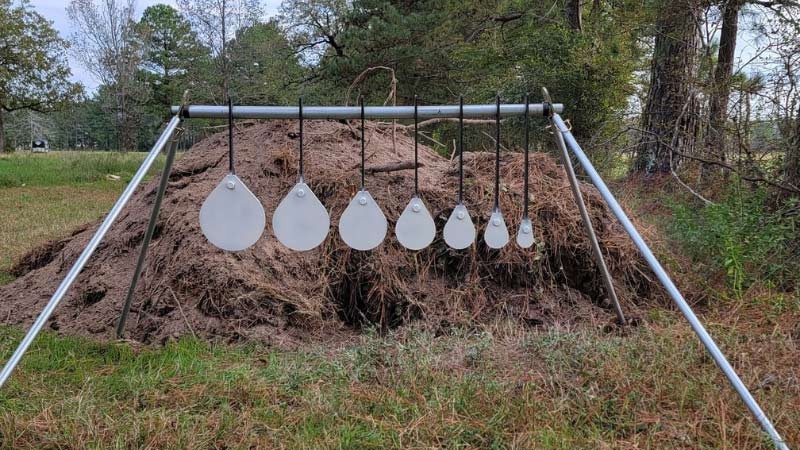
Exploring the Different Types of Steel in Target Shooting
When it comes to honing your marksmanship, the kind of steel target you choose can make a significant impact. So what kind of steel is commonly selected for these durable shooting companions? Predominantly, AR500 and AR550 grade steel reign supreme in the world of steel targets, providing the resilience required to withstand repeated ballistic impacts. This particular grade steel is heat-treated to achieve a balance between hardness and toughness, ensuring that metal targets not only last but are also safe to use, as they minimize the risk of dangerous ricochets.
The steel target types utilized can vary depending on the shooting discipline. Thicker targets are typically deployed for high-powered rifles, while thinner ones suffice for handguns. When it comes to target thickness, it’s essential to distinguish that the higher caliber and velocity a firearm has, the thicker the steel targets need to be for safety and longevity. Consider target thickness starting at 3/8 of an inch for standard range shooting and scaling up for more powerful firearms.
In competitive and tactical shooting environments, shooters tend to use steel that's responsive, giving instant auditory and sometimes visual feedback upon a successful hit. These responsive targets are a staple, as they provide a clear indication of accuracy, helping shooters adjust their aim in the blink of an eye. Whether it’s for competitive marksmanship, casual target practice, or tactical training, there's a specific type of steel target designed to meet the exact needs of the use steel scenario.
Exploring the types of steel in target shooting reveals an industry dedicated to refining the shooting experience; how the target is made affects every shot. The choice to adopt steel targets over other materials is a testament to steel's superior characteristics, catering not just to a shooter's preference but also to rigorous safety standards. So next time you're at the range, take a moment to appreciate the innovation and engineering behind each target, knowing it's more than just a piece of metal—it's a pivotal component in the art of marksmanship.
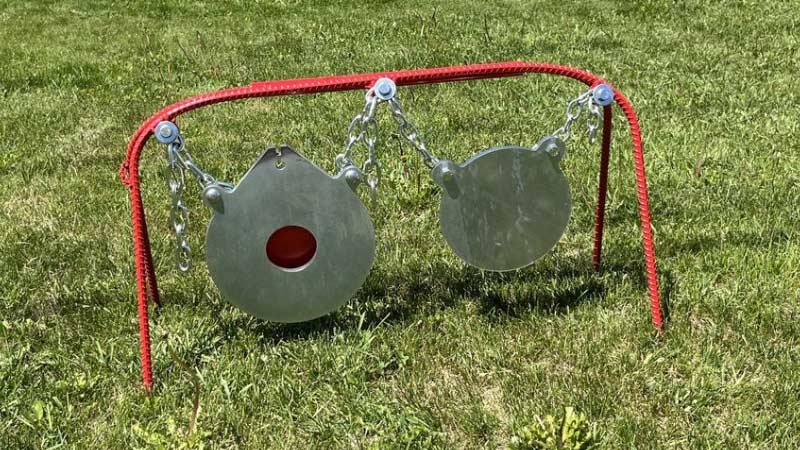
Choosing the Right Steel Target Types for Your Needs
When it comes to honing your marksmanship, shooting targets made of steel are unparalleled. The kind of steel target you choose can vastly impact the quality and safety of your shooting practice. Typically, for rifle shooting, AR500 and AR550 grade steel are the go-to materials, known for their durability and ability to withstand repeated high-velocity impacts. On the other hand, recreational shooters may use steel targets of milder grades for low-caliber pistols, fine for lighter use. But remember, it's not just the type of steel that's crucial — thickness plays a pivotal role too.
For an avid shooter, steel target types come in various shapes and silhouettes, serving as steel targets for dynamic training or standard circle plates for precision work. Each target type caters to a different skill set, whether it's sharpening your speed in tactical scenarios or perfecting your bull's-eye shot. When selecting the material, make note that AR500 steel is often used for targets designed to take a beating from rounds traveling at significant speeds. In contrast, softer, less robust steel would deform quickly.
The use of steel in targets isn't just about endurance but also safety. Properly hardened steel targets cause bullets to splatter safely in a predictable pattern, minimizing the risk of ricochets. Being mindful of these aspects ensures that your shooting experience remains both effective and secure. As you consider the best target for your training needs, bear in mind the cardinal rule: never compromise on quality. Using inferior steel could result in a dangerously compromised shooting target. No matter the target you pursue, the steadfast use of steel brings confidence to sharpen your shooting prowess with assured safety and reliability. Remember, when it comes to target shooting, investing in the right steel target type is as crucial as the firearm in your hand.

Understanding Steel Hardness and Quality for Steel Targets
When you're gearing up for an exhilarating session of target practice, the kind of steel target you select is paramount for both your safety and your shooting experience. Not all steel is created equal, and in the world of steel targets, the hardness and quality of the material dictate its suitability to weather the impact of rounds. Experts in the field favor AR500 and AR550 series steel for most shooting targets, as these variants provide an ideal concoction of durability and resilience. Since these steel target types are through-hardened, the projectiles are less likely to cause damage or dangerous ricochet, aligning them with the highest standards of safety and target integrity. When discussing steel target hardness, it's crucial to understand that it’s measured on the Brinell Hardness Scale. A grade steel like AR500 stands for Abrasion Resistant (AR) and the number signifies a hardness of 500 Brinell. Similarly, AR550 has a hardness of 550 Brinell, making it slightly tougher and more suitable for high-velocity ammunition. This kind of rigorous quality ensures that your steel target withstands the demands of repeated shooting, making them a wise investment for both novice and seasoned shooters. Choosing the right grade steel is critical to longer-lasting and safer shooting targets. It's equally important to consider the thickness of the target, as this also plays a vital role in how steel targets endure the force of fired rounds. Typically, the thickness ranges from 3/8 inches to 1/2 inch, with thicker options offering a boost in longevity, especially when it's hammered by the big guns. In conclusion, whether you’re engaging in tactical drills or simply honing your marksmanship, understanding the type and quality of steel used in your targets is crucial. Not only does it provide assurance of durability, but it also significantly cuts down the risk of shoot-throughs and bounce-backs, enhancing the shooting range environment for everyone involved.
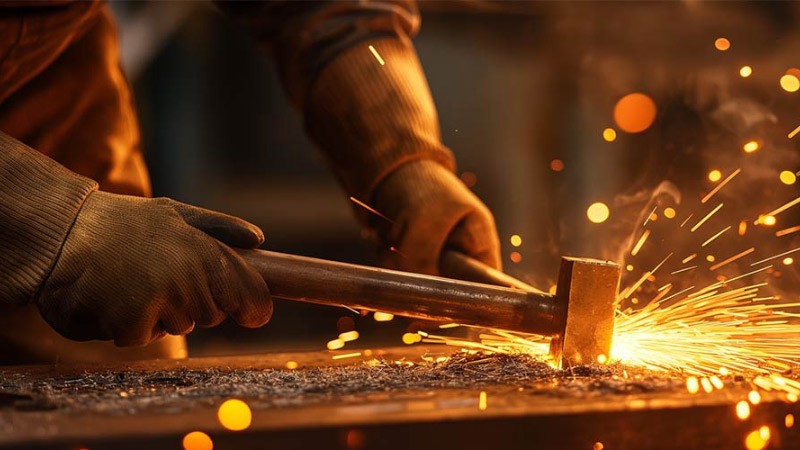
Comparing Thickness and Safety of Various Steel Targets
Selecting steel targets for shooting practice isn't merely a matter of preference – it's a crucial decision that affects both safety and performance. As we compare various steel target types, it’s evident that steel with the right amount of carbon and alloys stands as a non-negotiable starting point. But the kind of steel target you choose also hinges on its thickness. This not only dictates the target's longevity but also its capacity to mitigate ricochet risks. The grade steel used in the making of steel targets plays a vital role. Only certain types can withstand the demands of repeated shooting. For instance, shooting targets made from AR500 or AR550 steel are prized for their hardness and durability.
When we delve into target types and their respective uses, the contrast is clear – thicker targets are typically employed for high-velocity ammunition, while thinner counterparts may suffice for handguns and low-caliber rifles. The correct thickness of a steel target is pivotal for shooter safety, as it helps prevent the target from becoming compromised and sending dangerous fragments back towards the shooter. Precision in choosing the suitable type of target for the intended use goes a long way in ensuring nobody's well-being is jeopardized.
Meanwhile, the uses of thinner steel targets cannot be discounted. They offer a distinctive ring when hit, presenting immediate auditory feedback invaluable for training purposes. Hence, when we compare the gamut of steel target types available, it's evident that the selection process involves balancing the need for ballistic-grade steel with considerations including ease of transportation, cost, and the specific nuances of one's shooting practice. Each target's thickness mirrors its purpose, thereby underscoring the importance of intentional choice in the realm of shooting targets.
